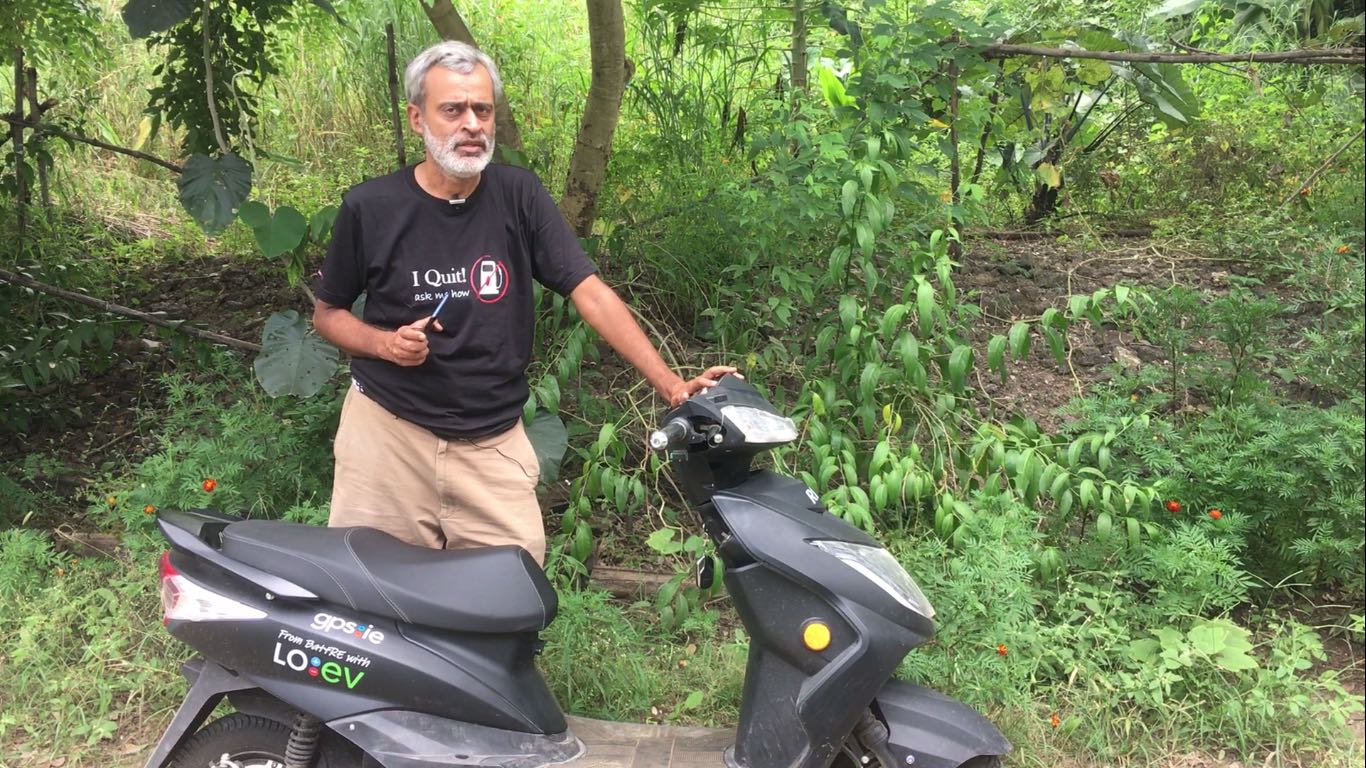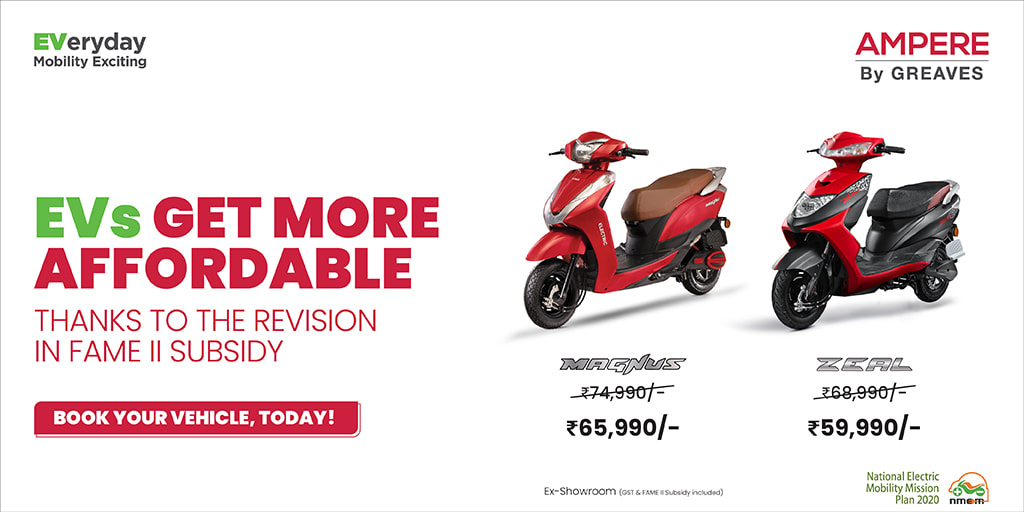
[ad_1]
The PluginIndia team got the Batt:RE GPS:IE electric scooter from the Batt:RE team in Pune for 5-6 days. The Batt:RE team has surpassed our expectations in terms of offering connectivity options to electric scooter. Many established brands don’t offer such wide variety of connectivity features in a budget electric scooter. In this article, we showcase our findings after testing the wonderful Batt:RE GPS:IE electric scooter for around 4-5 days.
SPONSORED
PluginIndia collected a service fee from Batt:RE to make this test report possible.
This is not an endorsement. We always strive to be objective.
Video : Batt:RE LO:EV – Budget Electric Scooter Test Report
Watch the video to understand the connectivity features of the scooter
The company loves the colon, and it has become a
takia kalaam in their branding. Though Batt:Re Lo:Ev Gps:ie sounds as interesting as Elon Musk’s son’s name. Musk was asked about it in a press conference, a few weeks after the kid was born, and he had already forgotten it. We will call it the Gypsy in this article from now on – it reminds one of the compact SUVs that Maruti used to make – and also of the nomadic genes that are embedded in humanity. My suggestion is to use metal embossed plastic for the branding – it looks more authentic than just stickers. We reached the Marunji outlet of the dealer. It was a typical October afternoon, with temperatures touching 35 C outside Eva (Baptised name for Kamlesh’s E2O). Was dreading the heated up ride back home, when the rain gods listened. The Hinjewadi area had a nice cloudburst, and for an hour, it did not rain, it poured. After the rain had subsided, I started the ride. Wet roads are always a good place to judge a vehicle. The Gypsy has a good grip – and the hydraulic disks on both wheels ensure that the stops are smooth and without surprises. Later on, I discovered that the Gypsy has regeneration too – a rare feature in two wheeled EVs. The regen definitely was working on downslopes, am not too sure if it works while braking. But no complaints on the braking front for sure.
The Gypsy comes kitted with a 48 V 30 Ah Okaya LFP battery, storing about 1.5 units of juice. Being LFP, the battery is not swapping friendly. Also the fits are such that one struggles to take it out of the battery compartment. The handle to pull it up also is not too ergonomic – it’s basically a strap. There is some usable storage above the battery. The plastic that separates the storage space from the battery compartment is quite flimsy. It definitely is an afterthought in what was originally a lead acid battery design. But one thing that I must appreciate about the Okaya battery is that it has a very reliable SoC meter built into the battery. A digital readout informs you about the SoC. I drove around 87 km (all in level 3 mode, with the highest speed available) when the SoC had reached 15%. I expect a real life range of 80 km with single seat level 3 mode. This is because the vehicle odometer overestimates the distance by 15%. The conservative claim of range made by the company is 65 km. There is another SoC on the speedometer console too – which is voltage based. Being more accessible, you tend to rely on it more as a rider. But being voltage based, the speedometer SoC levels fluctuate with the motor load. When in doubt, the advice is open the dicky, remove the battery cover, and do some eye muscle exercises to focus on the LCD display on the battery. I would recommend Okaya to have a LED display which is easier to read, especially when it’s dark. Incidentally, when the vehicle is powered on, there is a backlighting LED in the LCD display that is switched on, so visibility at night is not too bad with power switched on. I think the best solution is to have a CANN bus that will help the battery talk better to the speedometer SoC indicator. The baptism Gypsy, is because this particular model is GPS fitted. So you can track the vehicle on Google Maps in real time. A god send for delivery boys – and also parents of teenagers who would like to spy on them. (My personal advice, don’t – you will regret it in your old age.)
The seat foam is soft for the rider compared to the pillion. One sinks in sofa style. I used to be a big fan of these seats – but I think the real test will be to check my spine condition after a 40 km ride. In cars, seats tend to be more firm – but then there are also many more points of support for the car driver. The legroom is adequate for a 5 ft 9 inch person. One of the things that the EV scooter manufacturers have not been able to do is to use a thinner structure and keep the floor height low. It could be because most of them are Chinese designs, and I am tempted to conclude that the average Chinese is shorter than the average Indian, but Wikipedia informs me that the reverse is true. The mystery is yet to be solved.
My last two test vehicles have had Bosch motors, so I initially missed the great starting torque on the Gypsy. But I also was happy to note that the motor offers a jerk free ride. The analogy of the BattRe and its rider is that of a middle aged couple. Both the partners know each other well, there is not too much excitement – but looking at it through the silver lining lens, there ain’t too many surprises either. The Gypsy is not an ICE beater at the signal. It definitely does not turn heads. Yet, you can come to trust it to not let you down. And for a person who is looking at getting from A to B, it does that very well. If I may venture to say, the Gypsy has the potential to become the Activa equivalent in the two wheeler EV market.
A USB charging port seems to be standard on all good EVs. The Gypsy has one too. And there is space to keep the phone next to it. There is a remote provided with the vehicle, which has a vehicle immobilizer. I guess this is a feature that would be appreciated by owners who will use it for delivery. But for the rest of us, I think carrying a large remote does not make sense. If you really ask me, the best solution is to be able to do a handle lock from a phone app. When pockets are being emptied of even essential things like cash, weighing them down with heavy remotes makes little sense. In fact, as an intermediate – I would really appreciate smaller and lighter keys.
The LED console is colorful – though I feel that you need to have only 2 colors in the console palette – with the colors also being used to signal alarms. The Batt:Re power indicator LEDs do that – by turning red when the vehicle juice runs low. The switch quality is average. The rubber sleeve on the brake levers is a nice touch. Would have been happier if it had been a snug fit. The speedometer is calibrated to show speeds that are about 15% to 20% more than actual speeds. That’s what we have seen in a lot of low speed EVs. It showed 10 km on the ODO in a trip from my home to my work place. I know the exact distance – it’s 8.3 km. But this is a psychological play that we should live with. Perception is reality. After all, speed, like a lot of other things in India, is also maya. At the risk of sounding cliched, I will once again repeat that for a city dweller, the low speed vehicle has many many advantages, and that is reflected in the market share of low speed EVs in the total EV pie. From the nation’s PoV it’s a good thing. Better safety on roads, more efficient vehicles, less load on our regulatory authorities, what else could one want in the personal transport space?
[ad_2]












